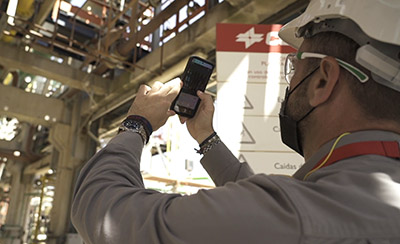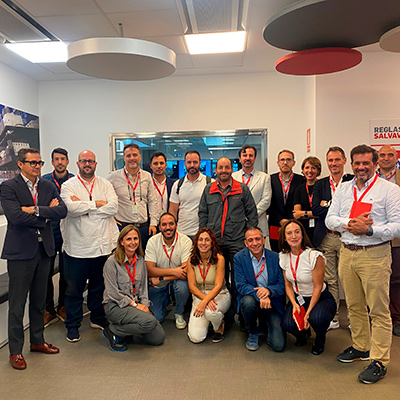- The European operator is testing the benefits of the 5G network at Cepsa's ‘La Rábida’ refinery, enabling real-time monitoring of its processes, providing efficiency and safety, through a pioneering ‘augmented reality’ project developed by Capgemini.
- Vodafone has also provided 5G coverage in the industrial center to connect devices and sensors, and obtain information from various dynamic plant equipment.
- This technology is presented as a necessary option to optimize production processes, and to achieve greater savings in the consumption of resources.
Vodafone, in collaboration with Capgemeni, has developed two ‘use cases’ for Cepsa included in the 5G Andalusia Pilot project. They are two initiatives carried out at its ‘La Rábida’ refinery in Palos de la Frontera (Huelva), which demonstrate the suitability of using 5G technology in industrial environments.
The projects presented will allow professionals working at the plants to identify product transport pipes in industrial facilities through a pioneering project of ‘augmented reality,’ and also to monitor the status of rotating equipment through sensors connected to the 5G network; thus increasing their availability thanks to predictive maintenance.
The monitoring of assets and facilities in factories is presented as a necessary option to optimize production processes, which are increasingly automated, and therefore achieve greater savings in the consumption of resources, making them more efficient.
Augmented Reality applied in refinery maintenance
At present, plant maintenance personnel attend to requests from the operations department, identifying pipes thanks to drawings and the support of remote experts via voice through the use of conventional transmitters; this causes a loss of time in repairs, and therefore in operations, as well as the possible expenses derived from the expert’s travel to the site.
The new solution, through the application of Capgemeni’s Augmented Reality (AR) on Vodafone’s 5G network, allows the operator to access information regarding pipes in real time, identify them autonomously by recognizing them through the developed application and even receive expert support through videostreaming if necessary.




